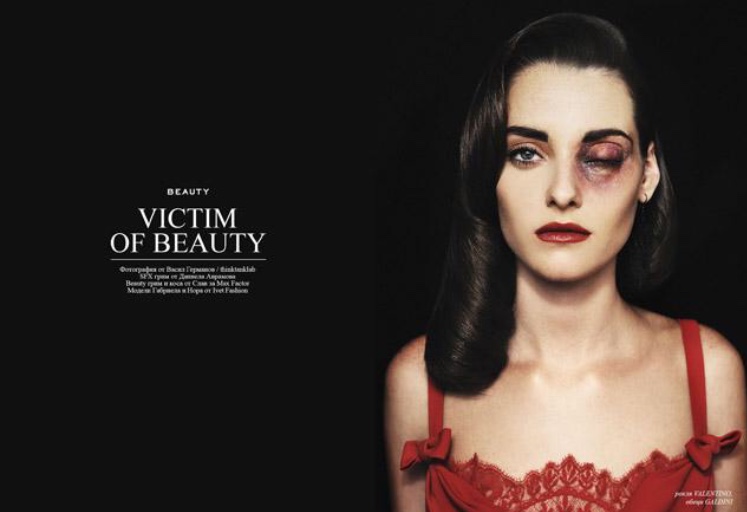
Through the use of advertising, there has been an idealized body type for women in regards to fashion and beauty. Advertisements involved pictures of models with unrealistic body types wearing expensive and high-end fashion, and this is what the average woman sees all around them. It is seemed as desirable, and that if your body looks like that, then these clothes will look good on you. You rarely see bodies of larger sized wearing these clothes in advertisements, so, therefore, it must not look good on those body types. These fashion designers and owners of the advertisements went out and searched for these women who fit their idealized body image. Only these women in a sense were worthy of wearing these clothes. However, the majority of women do not fit these standards, which I find interesting because you would think that if people wanted their clothes to sell, then they would appeal to the majority of women.
Not surprisingly, since the rise of department stores and advertising in the United States, the percentage of eating disorders has skyrocketed 400% since the 1970’s. With all of the mass advertising of how women should look, it put pressure on these women to fit into this mold, so that they would fit in and look good to impress everyone and prove worthy. Before this clothes were made specifically for women to fit their exact body type. But now during this time clothes were being mass-produced and given size numbers. This led to the increase in the desire to be a smaller size. Companies could see this increase in a woman’s desire to conform to the ideal body type and that they would go to great lengths to become their desired size, so naturally, these companies exploited that and used it as a way to sell more products that these women would want to buy to help them achieve their goal.
The average American woman is 5’4″ tall and weighs 166 lbs. In comparison, the average model is 5’10” tall and weighs only 107 lbs. Most runway models are a size 0. Plus sized models start at a size 6, even though the average women in the U.S. is a size 12-14. This is very confusing to young girls and women who are having body image issues.
In 2014, Victoria’s Secret launched a campaign titled “The Perfect Body”, and it featured many of their models who in the sense all had the same body type. Extremely thin, tall and large busted. Victoria’s secret got a lot of backlash for this. Victoria’s secret ended up changing the title of the slogan to “A Body For Every Body”. It still wasn’t good enough for many people because the advertisement still only shows one body type, which is far from encompassing of the majority of the women’s body type here in the U.S. The lingerie company Dear Kate launched their own ad retaliating at Victoria’s secret and called the “The Perfect Body” and it looked very similar to Victoria’s Secret except that the models wearing the underwear were of all shapes and sizes trying to be more inclusive and less discriminatory to other body types. Other companies have gone along and done this as well such as Aerie by American Eagle and Dove.
There are many different companies out there that have campaigns and advertisements in which clearly state their intended and desired body type for their products to be worn by. When will enough be enough? When will consumers stop paying attention to these ads and letting them affect their body image and self-esteem so negatively? When will these companies learn that by appealing to all body types and being more inclusive that their business will most likely do better in sales? This all seems like common sense to many people, and many people can see these advertisements and be outraged by them and see that what these companies are doing is wrong, yet it still is happening.







